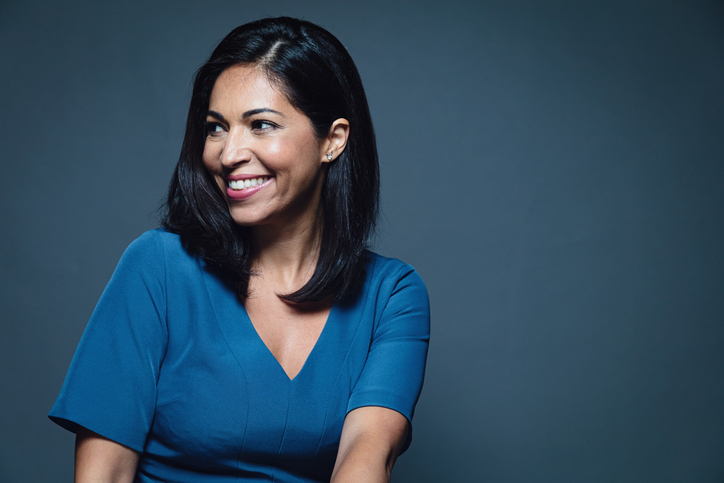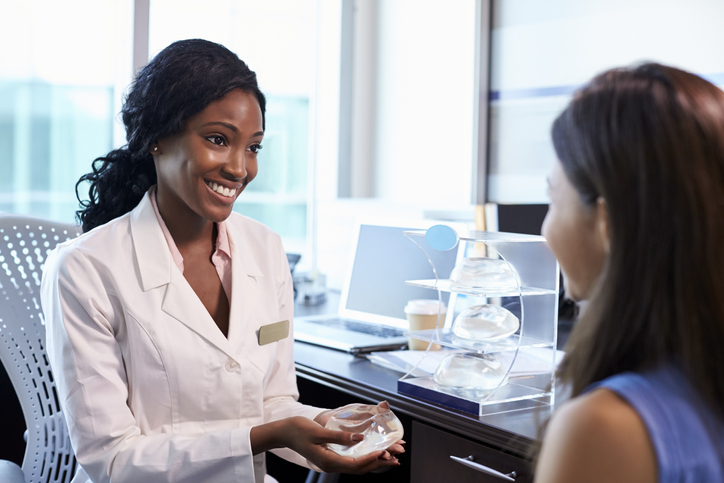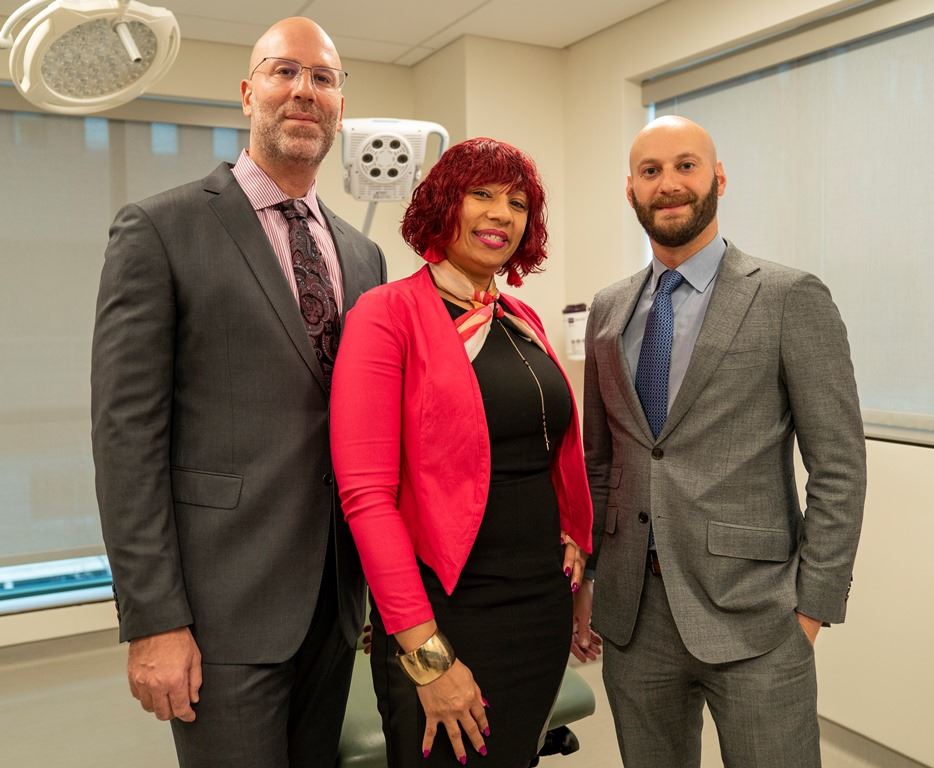Look and Feel Better After Breast Cancer
Deciding to have breast reconstruction after cancer is a deeply personal choice. Many women feel reconstruction improves their confidence and self-image, and helps them become more comfortable with their post-cancer appearance.

At Robert Wood Johnson University Hospital (RWJUH), we offer comprehensive services for reconstructive surgery after breast cancer, from tissue expander and implant reconstruction to advanced microsurgical procedures that use your own tissue to reconstruct the breast.
We also provide surgery for breast contouring and revision of previously reconstructed breasts using the most current surgical techniques.
Our highly skilled surgeons will help you choose the right procedure for you.
An interdisciplinary team will guide and support you through planning, preoperative, and postoperative care. Our team is trained in the latest techniques, has access to sophisticated surgical equipment, and partners with the Rutgers Cancer Institute, the state's only National Cancer Institute (NCI)-designated Comprehensive Cancer Center.
We offer you access to knowledge, resources, and the expertise of an advanced academic medical center focused on providing exceptional care.
Breast Reconstruction Procedures We Perform
We perform a variety of breast reconstruction procedures, from oncoplasty to implant-based and complex natural tissue flap reconstruction.
Oncoplastic Reconstruction
Oncoplasty is a common technique used to rebuild the breast after breast-conserving surgery such as lumpectomy (also known as partial mastectomy).
Traditionally, a lumpectomy is performed by a general surgeon trained in breast surgery, and the goal is to remove the breast cancer while preserving breast aesthetics. The breast surgeon and plastic surgeon work together to perform the lumpectomy and partial breast reconstruction to ensure the highest quality of cancer care and cosmetic outcome.
Partial breast reconstruction surgery may involve:
- rearranging breast tissue after the partial mastectomy is performed
- reducing the size of the breast (breast reduction)
- replacing the breast tissue with the patient’s own tissue (flap)
The plastic surgeon may even recommend a procedure on the other breast to improve symmetry. The specific technique used depends on the individual patient’s anatomy and tumor characteristics. Our expert plastic surgeons work closely with our breast surgeons as well as medical and radiation oncologists to provide patients with the highest-quality individualized treatment.
Breast Implants
 Breast implants are medical devices used in the reconstruction or augmentation
of breasts. They are made of silicone shells filled with either silicone
or saline (salt water).
Breast implants are medical devices used in the reconstruction or augmentation
of breasts. They are made of silicone shells filled with either silicone
or saline (salt water).
Breast implants can be used to reconstruct breasts following a mastectomy for breast cancer.
Implants come in many different shapes and sizes, and your surgeon will help you chose which is the most appropriate.
They can be placed in front of or behind the chest muscle. The best location of the implant is determined on an individual basis and in discussion with your surgeon.
When implants are used to reconstruct a breast after mastectomy, often a temporary implant, or tissue expander, is placed in the pocket created after the breast tissue is removed. The tissue expander preserves the space created by the mastectomy and allows the tissues to heal before placing the final implant in a second surgery.
A tissue expander is similar to the final implant in that it has a silicone shell, but is gradually filled with saline over several weeks or months during office visits.
Often, an acellular dermal matrix, a biologic mesh, is used to support the tissue expander/implant. This allows the surgeon to place the the implant in front of the muscle, reducing post-operative pain and improving outcomes.
Natural Tissue Flap Reconstruction
Natural tissue reconstruction, also known as flap surgery, uses your own tissue (autologous tissue) to reconstruct the breast. In flap surgery, a section of skin, fat, and blood vessels, and sometimes muscle, are removed from one area of your body and used to create a new breast.
This advanced type of surgery requires the highest degree of surgical skill and experience. It involves microsurgery to detach and connect tiny blood vessels to improve blood flow to the tissue.
A side benefit of this kind of surgery is that when the flap is removed, it has the effect of slimming or removing excess bulk. The most common kind of surgery is DIEP flap surgery, where the tissue, including fat, is removed from the lower belly to be used for the breast.
The most common free flap surgeries we perform are:
- DIEP - Deep inferior epigastric perforator surgery
- PAP - Profunda artery perforator surgery
- TUG - Transverse upper gracilis surgery
- GAP - Gluteal artery perforator surgery
Learn more about natural tissue flap breast reconstruction surgery at RWJUH.

